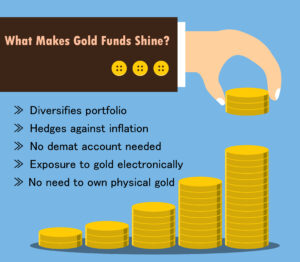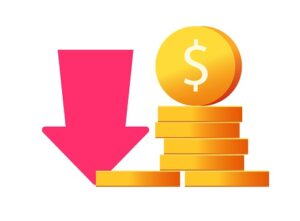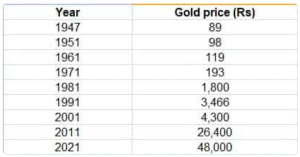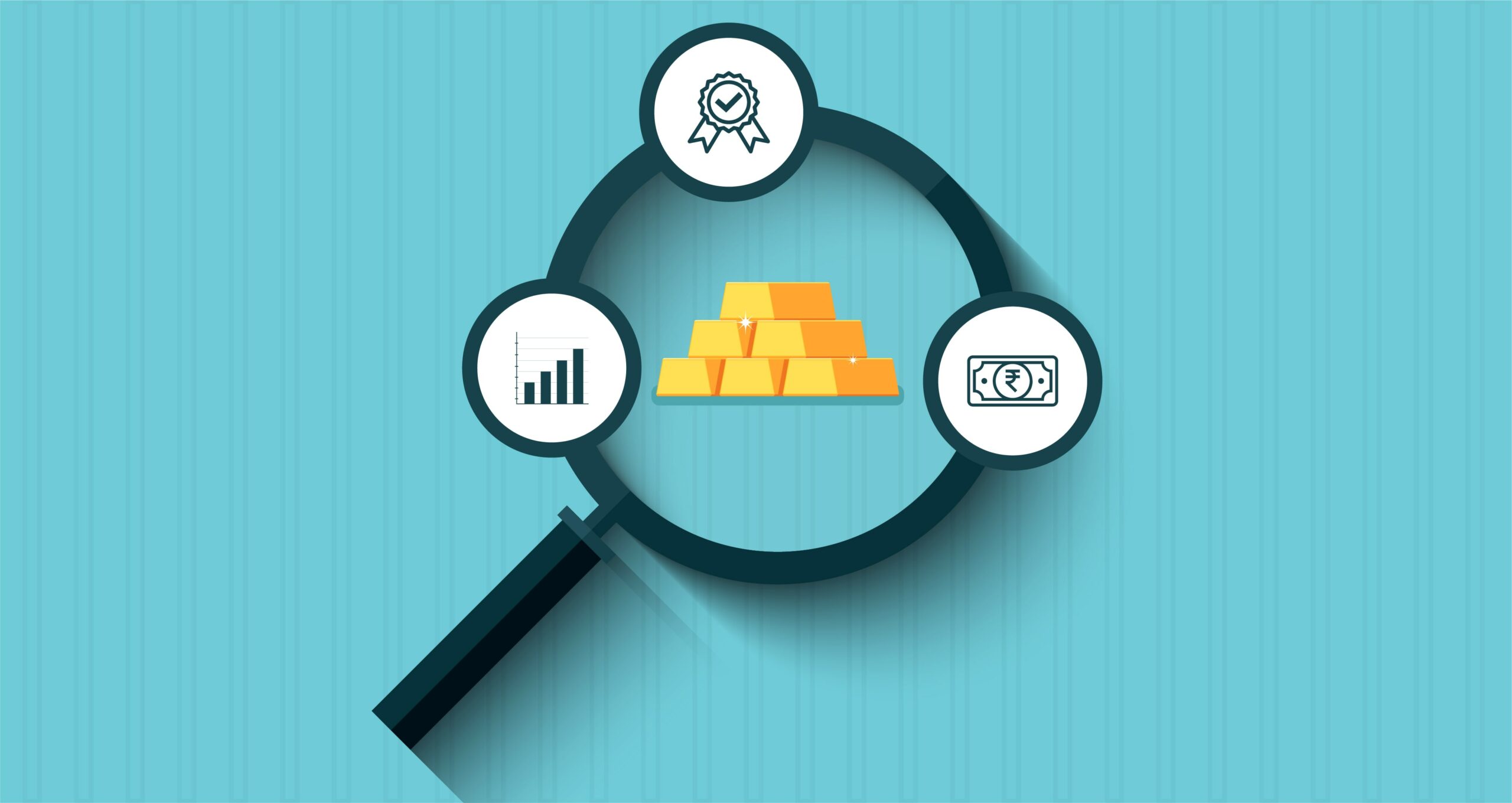Gold is respected throughout the world for its value and a rich history, and is considered auspicious in many cultures. It’s one of the most influential commodities that exists in our market today. It can be used both as a commodity and currency, and is also a way of storing wealth. All central banks around the world store a part of their wealth in the form of gold reserves. Gold is considered a safe investment – it is supposed to act as a safety net when the markets are in decline. Today, we can invest in gold in its physical form, in the form of bullions or jewellery, or digitally, in the form of SGBs (Sovereign Gold Bonds) and EFTs (Gold Exchange-Traded Funds). There are many gold investment benefits –

BENEFITS
- Protection against inflation – Gold is considered a good hedge against devaluation of currency and inflation. Inflation is the rate at which money loses its value over the years. Usually investment in gold over the long run offers higher than inflation returns. With the rupee currently devalued, gold can act as an attractive investment tool.
- Liquidity – It is very easy to buy and sell physical gold in the global market. Even banks sell gold in the form of coins. One can get cash immediately by selling gold, that is, it is more liquid as compared to stocks and bonds.
- Loans – in case of any emergency situation where financial help is needed, it is not necessary to sell the gold or jewellery in possession. Banks provide loans against them, and at interest rates lower than general loans.

- Security and stability- As compared to other forms of investment such as stocks and bonds, prices of gold have been quite stable and do not go down by a large margin even during a crisis. Thus it provides price stability. It ensures to secure a good value even in the future.
- Appreciation- When invested over a long period, it is said to on an average, give a return of 9-10% p.a., which is much higher than provided by fixed deposits and savings accounts, with a small amount of risk.
- Portfolio diversification- the key to diversification is to find investments that are not closely correlated to one another. Gold has historically had a negative correlation to stocks and other financial instruments. Hence adding gold to the investment portfolio along with stocks and bonds reduces the overall risk and volatility. These are some of the gold investment benefits.

DISADVANTAGES
Warren Buffett has long held that investing in gold is foolish. There are a few reasons by investing in gold may not be the best decision-
- Unlike equity where we get dividends and bonds where we get a fixed rate of interest, , we get no guarantee of returns or benefits with gold. Hence, it is not an income-generating asset and is based entirely on price appreciation.
- Over the long run, historically speaking, both stocks and bonds have outperformed price increase in gold on an average.
- While purchasing gold, a GST of 3-4% is required to be paid by the customer along with the making charges in case of gold jewellery. Moreover, if the gold is sold within three years from the date of purchase an STCG(short term capital gain) tax is applicable. If the sale is made after three years, the LTCG(long term capital gain) tax of 20.8%is applicable.
- As a commodity, gold is not an essential commodity and during times of emergency, gold has little to no use as simply an object.
- Although it is considered a relatively safe investment, historically speaking, it has not always given positive returns and in 2008, when the economy had crashed, it had lost a lot of its value. Hence, as an asset class in which a certain amount of risk is involved but returns are neither good not guaranteed, it is not the best form of investment.

HISTORY
Gold has always been a favourite investment option among Indians. Unlike paper currency, coins and other assets, gold has maintained its value throughout the ages. People see gold has a way to pass on to preserve the wealth through generations.
The average gold price in 1947 was around Rs.88.62 per 10 g and today and has picked up to nearly Rs.48000 per 10 g in the retail bullion market, showing around 54,000% return post-independence. When the world experienced the 2008 global economic slowdown, gold proved to be an investor’s haven when when other investments in equity, bond, etc. started losing their value. During this time, gold prices went down to and were at around Rs.12,500 per 10 g, but after that there was a steep rise in gold prices observed globally. There has been around 284% rise in gold prices in the last 13 years.
Similarly, in 2020, when Covid 19 hit the world and the stock market crashed, gold retained its value. Inn fact, in July 2020, the price of gold surpassed its previous all-time high price since September 2011. So, when the stock market was down by about 28%, gold was up by about 11% on average. This is because gold has proven its value in being a liquid asset in times of emergency and has proven its gold investment benefits.

INVESTMENT
Each individual has their own investment goals, i.e., the returns that they want or expect out of their investments. Different individuals also have different risk-taking capacities. Depending on these factors, gold should be added to the investment portfolios. Although it is advisable for someone with a stable and regular income to put not more than 2-5% of the portfolios in gold, there are three strategies used by investors to determine the composition of gold in their portfolios-
- 0-10% – An investor who is relatively confident in the economic growth of the country, but wants to have some insurance against unforeseen events.
- 15-25% – An investor who is sceptical about the future of the country’s economy. Its risk-taking capacity is moderate to low.
- 30-50%- An investor who thinks the economy is headed downhill, and thinks that there will be a rise in the inflation rates and a devaluation in the Indian rupee. Such an investor, with low risk-taking capacity, will buy more in gold as a safeguard against these events.

FUTURE
Commodity experts say that gold is the most undervalued financial asset and may shoot up to its lifetime high by the end of 2021. Due to weakness in the US dollar against the Indian rupee, and no sign of increasing the interest rates, the demand for physical gold is increasing. A third wave of COVID-19 is also expected in the near future, which might fuel a gold price rally. The uncertainty and rising inflation might be the factor that leads gold to have higher prices in the near future.

in conclusion, gold should be an important part of a diversified investment portfolio, especially during times of inflation and devaluation of currency. Although tits price can be volatile in the short term, gold investment benefits are many, and it has always maintained its value long-term. Throughout the years, it has served as a hedge against inflation and erosion of major currencies. Thus, it may be worthwhile to invest a small percent in this commodity.




